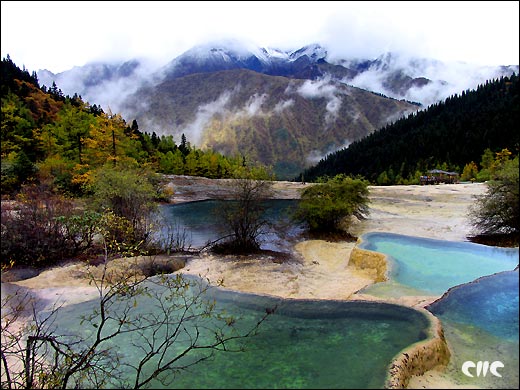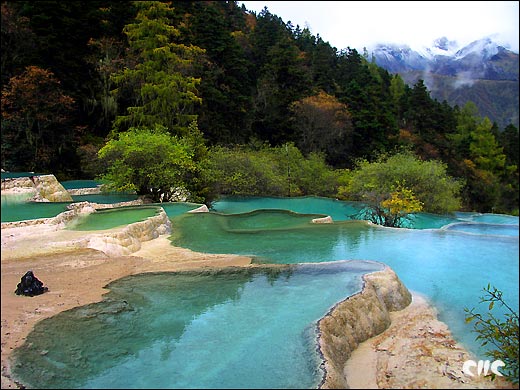
Huanglong
Huanglong Scenic and Historical Interest Area (1992, World Natural Heritage)

Huanglong (Yellow Dragon) Scenic Area, also in northern Sichuan's Aba Tibetan and Qiang Autonomous Prefecture, neighbors the Jiuzhaigou Scenic Area. It was named after the ancient Huanglong Temple within the area.
The most remarkable scene in the area is the Huanglong Valley noted for its unique open karst landscape. The main attraction of the valley is the 3.6-kilometer-long and 30 to 70-meter-wide pale yellow calcareous deposits. At the end of the valley, water from melting snow mixes with limestone water from underground, flowing down the mountain terraces, depositing the calcium carbonate from the limestone water on the rocks, stones, and fallen branches in its path. The calcium carbonate, in turn, develops into solid, low travertine banks and reacts chemically with organic and inorganic substances, resulting in various kinds of calcareous deposits that reflect a golden

color in the sunlight in the water that flows down the slopes just like a huge yellow dragon flying down the snow mountain. When water flows into two separate streams, it naturally turns into more colorful lakes and waterfalls, forming a ladder-shaped lake group. The water is crystal clear. The mineral deposits at the lake bottom look like jadeite and agate – magnificent and beautiful.
The Huanglong Temple is situated on the top of the scenic area. South of the temple is Xuebaoding, the main peak of the snow-capped Minshan Mountain. Rising 5,588 meters above sea level, it is covered in snow all year round.
The scenic area was made a world natural heritage site in 1992.








